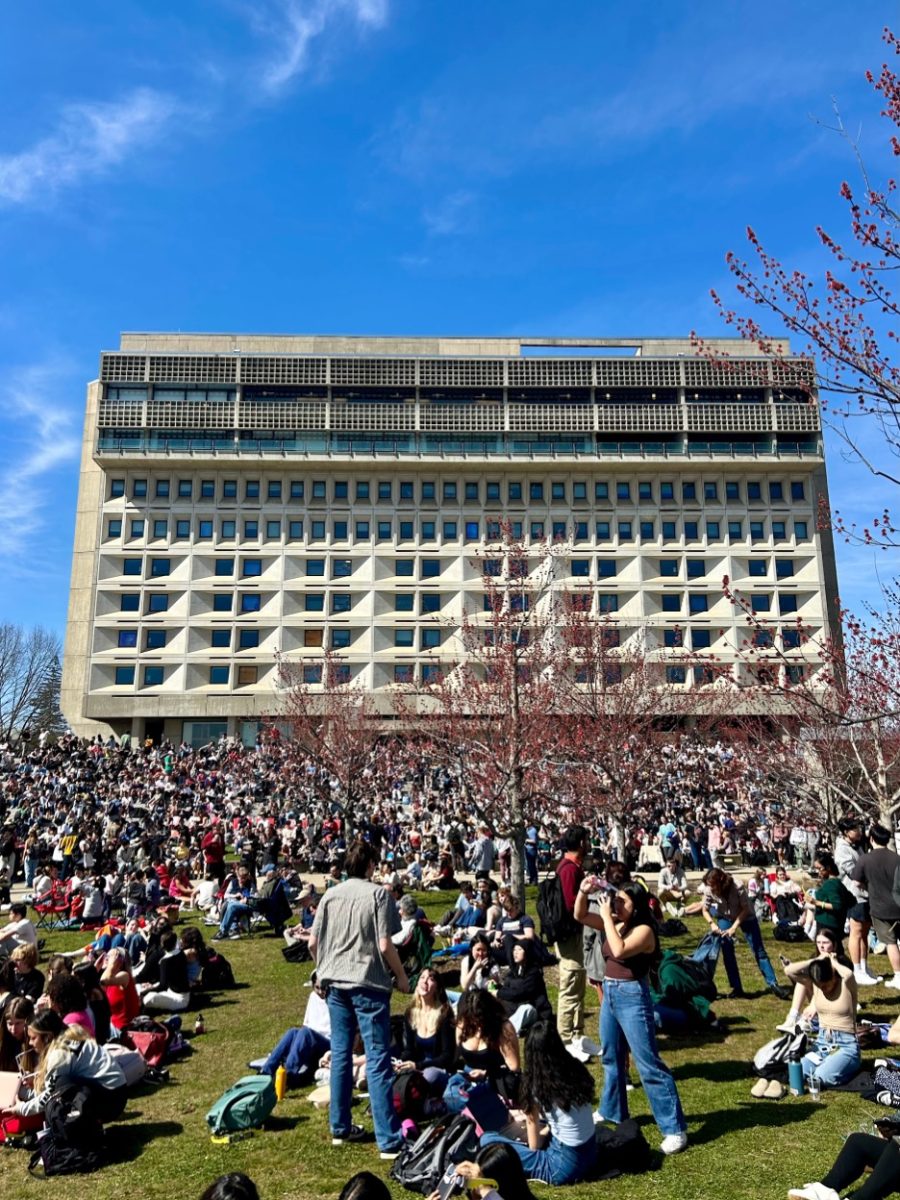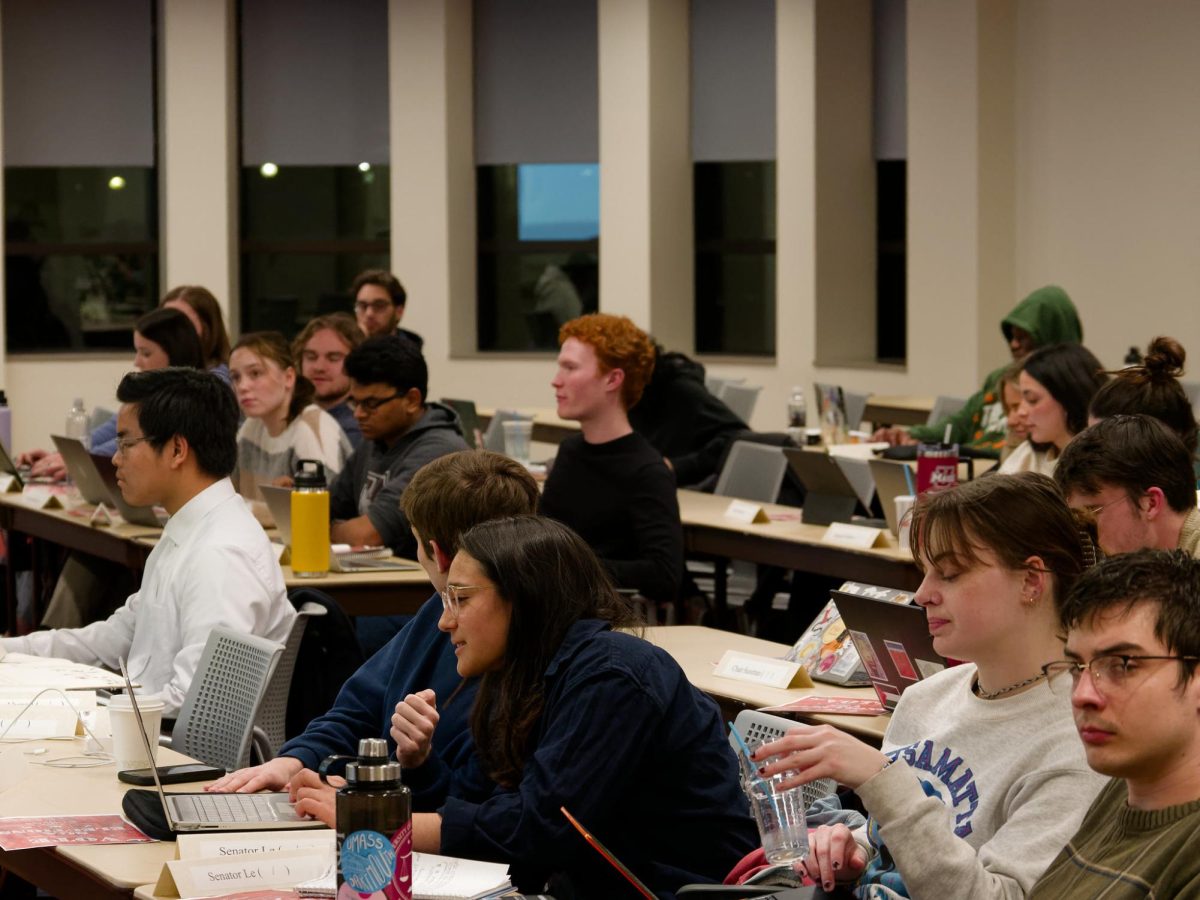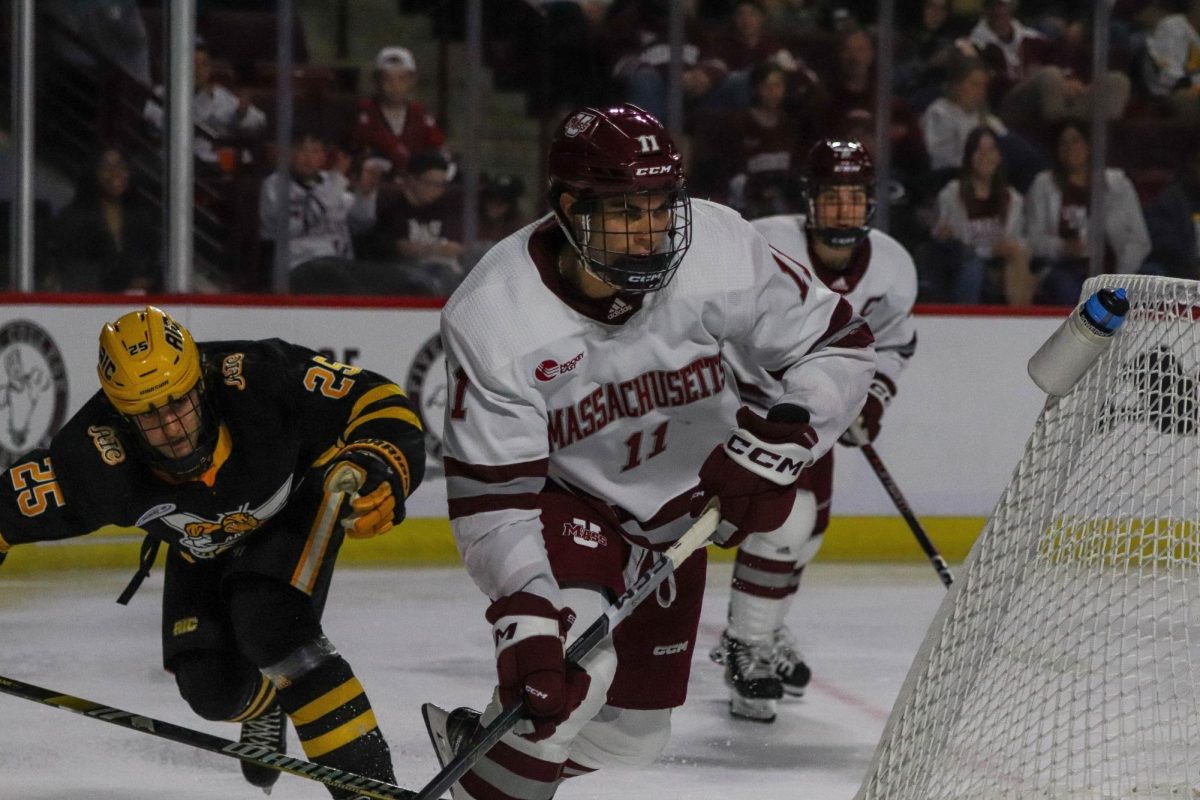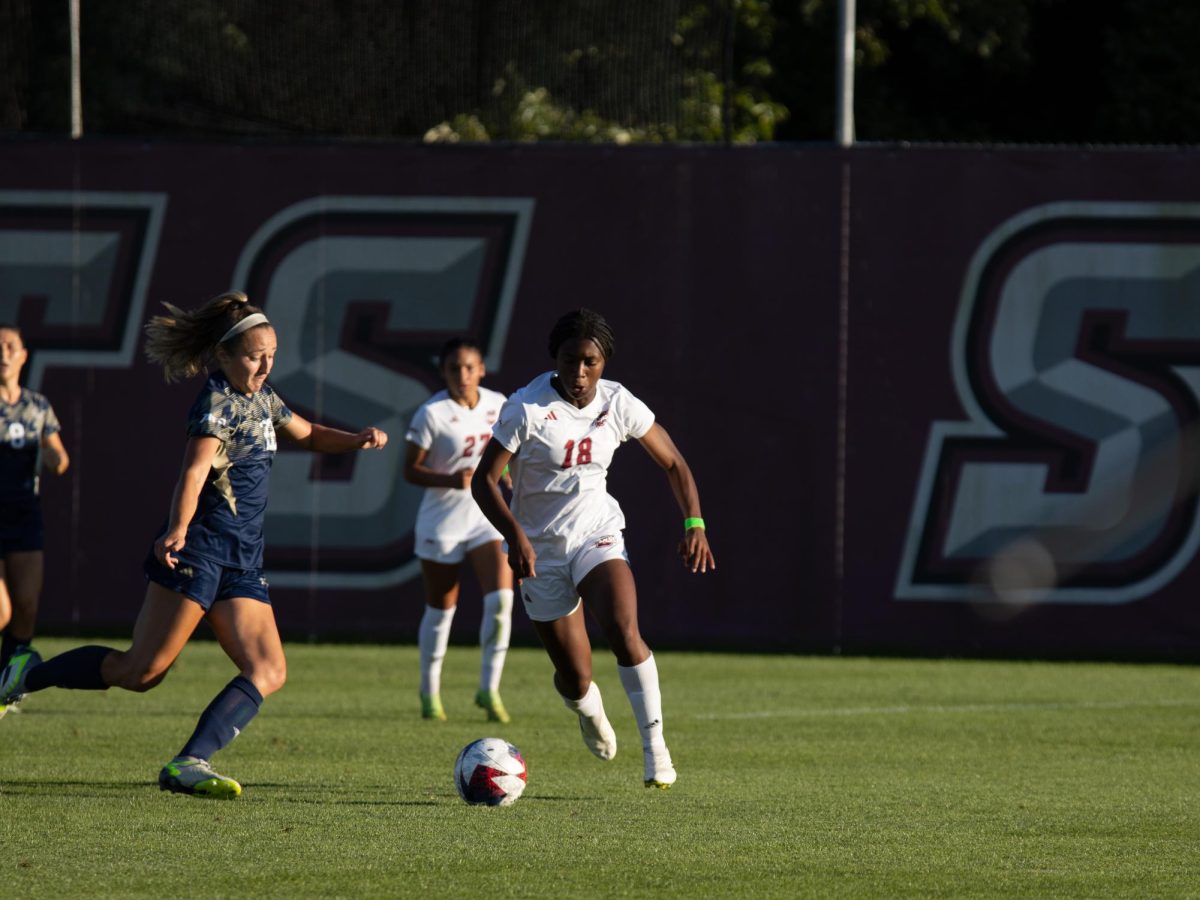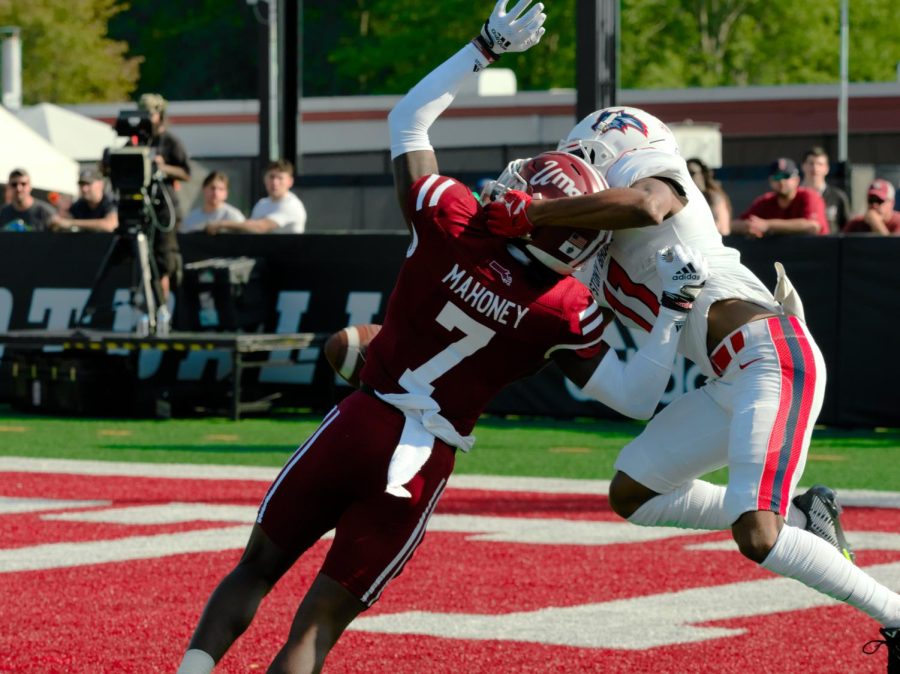December welcomes the end of the fall semester, final grades being processed and a student body looking forward to the winter break and what the spring will hold.
Reflecting on the past few months, one may remember when the University of Massachusetts announced in August that they would be testing students twice weekly.
This would be a challenge, considering the sheer effort and resources required to test, analyze and inform the thousands of people who make up the UMass community. Even with a reduced student and staff presence on campus, there were still thousands of weekly tests. To date, UMass has performed 183,519 tests.
This past summer, as campus leaders made plans to re-open the University, albeit at reduced capacity, they concluded that having the ability to analyze their own samples was essential, instead of relying solely on an outside organization. This capacity is beneficial not simply in terms of cost, but also in mitigating the risk of delays when backlogs occurred or transportation was disrupted.
As of mid-October, UMass was granted the state and federal licensing that certified their testing facility. This allows them to analyze (to simplify the extremely complex process of collecting, sifting and examining tests) samples “in-house” through the Institute for Applied Life Sciences (IALS).
The Daily Collegian spoke with Dr. Peter Reinhart, the director of the Institute for Applied Life Sciences, about the process of establishing an independent testing operation, as well as the challenges and benefits that have materialized throughout.
Previously, UMass had been sending tests to the Broad Institute of MIT and Harvard. Established in Cambridge, the Broad is one of the largest sequencing centers in the world, and they have established an extensive testing operation. Currently, they analyze samples from over 100 colleges throughout New England.
Due to equipment shortages IALS had just received equipment they ordered 26 weeks prior at the time of this interview. Additionally, UMass is only able to process as many samples as they have the infrastructure for.
“We are not able to meet the full demand of the campus, so we still have some amount of samples going to the Broad,” Reinhart said.
The many samples that are processed by UMass follow a specific process. Once collected, samples go through quality control testing and are accessioned and cataloged within a secure data system.
“We then perform RNA extractions using liquid-handling robotics. The RNA samples are then assembled into a PCR reaction on a second kind of robotic line. And then those samples are transferred to a third set of robotics that involve the actual polymerized chain reaction,” Reinhart said.
While robotics technology has automated many of the tasks, this extensive process still requires human involvement throughout the handling and analysis of the sample. All this work is powered by an experienced team that runs in two shifts.
About seven people work in the lab per shift. This includes a technologist, a technician and various staff that run sample accessioning. Reinhart noted that laboratories also have a specific structure, requiring a general supervisor, “anytime testing is being done, day or night.”
Reinhart is currently installed as the technical supervisor for general operations. Above him is the role of lab director that, “approves all of the validation runs we do, if [they’re] not happy with any part of that, it has to get redone all the way to [their] satisfaction.” At the very top, there is a board of directors to guide the project.
This expansive operation is constantly evolving. From the formation of the idea, to the first day of operation, the venture has required adapting to meet changing needs as the ever-shifting availability of resources and information about the virus itself continues to be discovered.
UMass made the decision early on within the pandemic to begin the process of setting up a facility that could analyze COVID-19 tests.
When asked about the reasoning behind their decision, Reinhart said, “It was a lot of things. In my day job…we manage interdisciplinary research, we manage a lot of centralized equipment facilities. So, in March as this started to evolve, I started thinking about…well we have a lot of genomics equipment here already, we have space here. What would it take to actually set up a clinical facility?”
Previously, Reinhart worked in the industry at companies such as Wyeth/Pfizer, where he gained experience in clinical testing. Back in March, he drafted a proposal, “that said, look, we have space, we have people sitting at home doing nothing, that would love to volunteer to help with some testing, we have good equipment. We have a lot of the ingredients that one would need to start thinking about setting up a facility, what would it actually take if we did this for real.”
A driving factor for establishing an in-house facility was the cost benefits. Compared to outsourcing entirely to another operation, UMass had the chance to reduce the cost of testing by roughly 15 to 20 percent. The savings increased exponentially in the context of the thousands of tests that UMass would have to undertake.
However, at the time, with the structure of the fall semester still uncertain, the undertaking posed a risk. Reinhart noted, “we have to pay for the equipment up front, at risk [is] millions of dollars. We have to hire staff upfront [with] a large commitment in salary dollars. All with the hope we would recoup all of that outlay with the savings that a large volume of testing would provide.”
Reinhart sent his proposal to Chancellor Kumble Subbaswamy and, “after some deliberation I got a phone call one week on a Sunday evening, and Subbaswamy said, ‘You have the green light. Go and make it happen.’”
The early start provided a silver lining when it came to sourcing resources for the facility. Reinhart noted that it was a, “huge, huge challenge… to source and buy the equipment…the only thing that allowed us to get our operation up and running as quick as we did [was] …our Chancellor committed fairly early that he was going to [contribute] funding to buy this equipment at risk, quite a long time before other campuses made similar decisions. Our first orders were placed very early and we got them relatively quickly.”
The benefits of developing UMass’ own testing capacity go beyond cost savings. In general, turn-around time is better than if they continued outsourcing entirely to the Broad Institute. While the Broad has the benefit of running a 24/7 operation, the three hours it takes to transport samples to Boston and the backlog of tests that naturally occur when running tests for multiple different organizations, meant that UMass could be ultimately more productive by establishing a facility of their own.
However, decisions were not always made solely in the name of time efficiency. When UMass made the decision to test samples by running a polymerase chain reaction (PCR) assays, they knew that there were different assays available that may be faster, but Reinhart noted, “none of them [were] as rigorous as a PCR test.” Wanting to reduce the risk of calling a false positive or missing someone who actually was infected, they decided to stick with what Reinhart refers to as, “the gold standard assay.”
However, the gold standard takes time, roughly six to eight hours to run. That doesn’t include the time it takes to swab your nose, collect the sample, label it and send it over to the facility.
Additionally, after the assay procedure is run, the results must be quality controlled. The entire operation requires about eight to twelve hours.
There have been plenty of challenges throughout the long journey to become a certified facility capable of processing thousands of tests weekly.
Finding staff was an obstacle in the beginning. “These types of staff positions are now in super high demand…” and additionally, “The demands for working in a [clear] lab are very stringent. Needs a minimum of six months working with human specimen. So, we cannot just take people with lab experience in a molecular biology lab,” Reinhart said.
After the initial head start, sourcing equipment also became a challenge. “Astronomical demand. Think about every school, college, government, nursing home, hospital…Hospitals have a capacity for symptomatic testing…which is twenty people show up every day. When the chancellor contacted me, he said ‘build a capacity for three to five thousand samples a day because I want to do surveillance testing,’” Reinhart said, “Nobody had that capacity, everyone now wants that capacity to do surveillance testing.”
These challenges are not unique to UMass, as evidenced through the meetings of campus leaders who are all establishing their own testing capacity.
Boston University, Northeastern, Broad MIT, Tufts, among others all meet weekly to discuss experiences, developments and obstacles. Reinhart said, “It isn’t all of us reinventing the wheel individually… We are doing it as a cabal of COVID-19 testers that are very open in sharing experiences.” Reinhart notes, “It’s just been great to be able to draw on the experience of ten or so people who between us have probably done two million COVID tests. So that’s a lot of experience that has been accumulated in a very short period of time…Every week we learn a little more.”
For the director, this undertaking differs most greatly from other projects due to, “The immediate urgency of the outcome.” Reinhart noted that, “In some ways, it might be similar to setting up Alzheimer’s testing or a new therapeutic that might actually save a lot of people’s lives in real time.”
Every challenge, delay, development and decision rests upon, “the fact that there is the need out there for the population, in real time…Every day we are delayed getting out testing, thousands of people don’t get tested.” Scientific collaboration looks drastically different, as one can no longer rely on going to the office next door for help solving a problem. Resources are closed and the financial risk is still a strain. Reinhart said, “All of that means some timelines are being expanded at the same time I am trying to compress them, because the urgent need is there.”
Grace Fiori can be reached at [email protected]. Follow her on Twitter at @grace_fiori.













